Google AutoML Software
Google AutoML is a tool from Google that automates the process of developing machine learning algorithms for various tasks. It’s user-friendly, fairly simple to use, and cloud-based.
AutoML is implemented in five different applications:
- Vision
- Video Intelligence
- Natural Language
- Translation
- Tables
Neural Architecture Search implemented as a RNN that generates architectures encoded as a variable-length sequence of tokens. The sequence of tokens generated can be seen as a sequence of actions that should be done to generate the architecture. 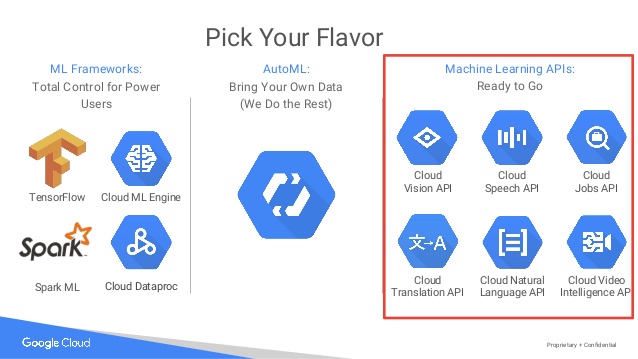
Once an architecture is generated, the proposed model is constructed and trained to finally record the acquired accuracy. The RNN is trained used reinforcement learning with a policy that updates the parameters of the RNN so that it generates better architectures over time.
Cloud AutoML enables developers with limited machine learning expertise to train high-quality models specific to their business needs. It relies on Google’s state-of-the-art transfer learning and neural architecture search technology.
AutoML Workflow
The businesses can bring their dataset, identify labels, and set the button. The steps that take place between data acquisition and prediction is abstracted by the AutoML platform. The trained and optimized machine learning model predicts. In brief, most of the steps are handled behind the scene providing time and opportunity for businesses to stay focused on problem and solutions rather than process and workflow.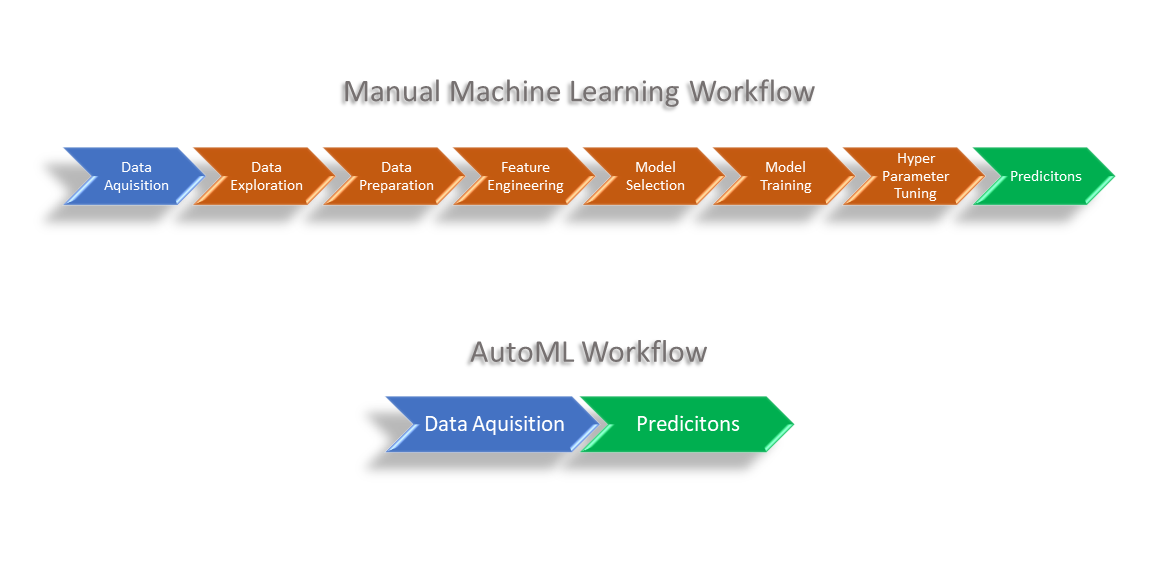
Many of the AutoML platforms support to export the trained model into mobile devices running in iOS and Android, enabling developers to integrate easily within their mobile devices. As they get exported into the Docker container, DevOps team can deploy them at scale and infer in production environments.
AutoML Vision
AutoML Vision enables you to train machine learning models to classify your images according to own defined labels.
- Train models from labeled images and evaluate their performance.
- Leverage a human labeling service for datasets with unlabeled images.
- Register trained models for serving through the AutoML API.
Cloud Vision includes several options to use in order to integrate machine learning vision models into applications and web sites.
AutoML Vision Edge now allows also to export custom trained models.
- AutoML Vision Edge allows to train and deploy low-latency, high accuracy models optimized for edge devices.
- With Tensorflow Lite, Core ML, and container export formats, AutoML Vision Edge supports a variety of devices.
- Hardware architectures supported: Edge TPUs, ARM and NVIDIA.
Cloud AutoML Vision Object Detection enables developers to train custom machine learning models that are capable of detecting individual objects in a given image along with its bounding box and label.
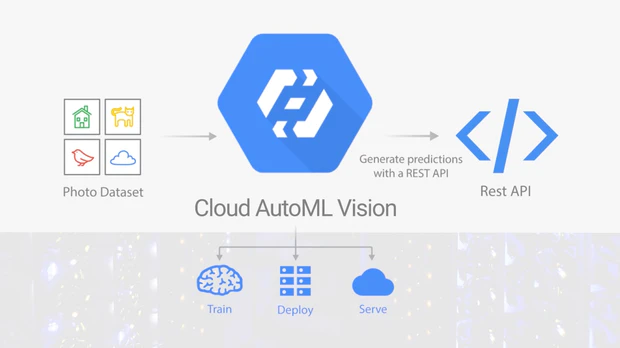
Cloud Vision Product Search allows retailers to create products, each containing reference images that visually describe the product from a set of viewpoints. Retailers can then add these products to product sets. Currently Vision API Product Search supports the following product categories: homegoods, apparel, toys, packaged goods, and general .
To build an application on iOS or Android devices use AutoML Vision Edge in ML Kit. This solution is available via Firebase and offers an end-to-end development flow for creating and deploying custom models to mobile devices using ML Kit client libraries.
AutoML Video Intelligence
Video Intelligence includes several options for integrating machine learning video intelligence models into your applications and web sites.
AutoML Video Intelligence Classification enables you to train machine learning models to classify shots and segments in your videos according to your own defined labels.
AutoML Video Intelligence Object Tracking enables you to train machine learning models to detect and track multiple objects in shots and segments. You can use these models to track objects in your videos according to your own pre-defined, custom labels.
AutoML Natural Language
AutoML Natural Language enables building and deploying custom machine learning models that analyze documents, categorizing them, identify entities within them, or assessing attitudes within them.
If you don’t need a custom model solution, the Cloud Natural Language API provides content classification, entity and sentiment analysis, and more.
AutoML Natural Language uses machine learning to analyze the structure and meaning of documents. You train a custom machine learning model to classify documents, extract information, or understand the sentiment of authors.
- A classification model analyzes a document and returns a list of content categories that apply to the text found in the document.
- An entity extraction model inspects a document for known entities referenced in the document and labels those entities in the text.
- A sentiment analysis model inspects a document and identifies the prevailing emotional opinion within it, especially to determine a writer’s attitude as positive, negative, or neutral.
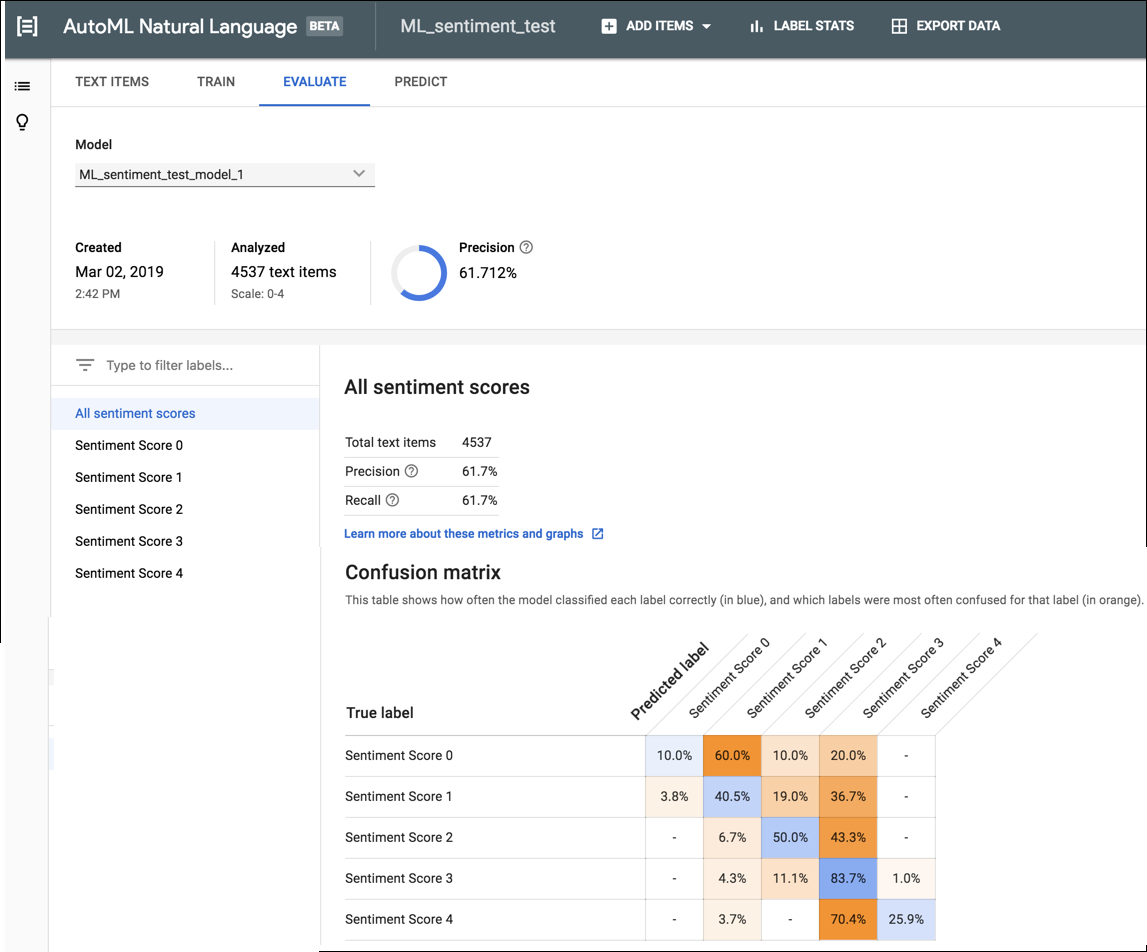
Basic classification, entity extraction, and sentiment analysis are available through the Cloud Natural Language API. AutoML Natural Language enables defining custom classification categories, entities, and sentiment scores that are relevant to your application.
AutoML Translation
AutoML Translation allows to create own, custom translation models so that translation queries return results specific to the domain.
AutoML Translation trains custom models using matching pairs of sentences in the source and target languages. It treats each sentence pair as an independent training item, without assuming any correlation between separate pairs.
The sentence pairs used to train your custom model must be in Tab-separated values (.tsv) or Translation Memory eXchange (.tmx) format. It is possible to batch multiple .tsv and .tmx files into a comma-separated values (.csv) file.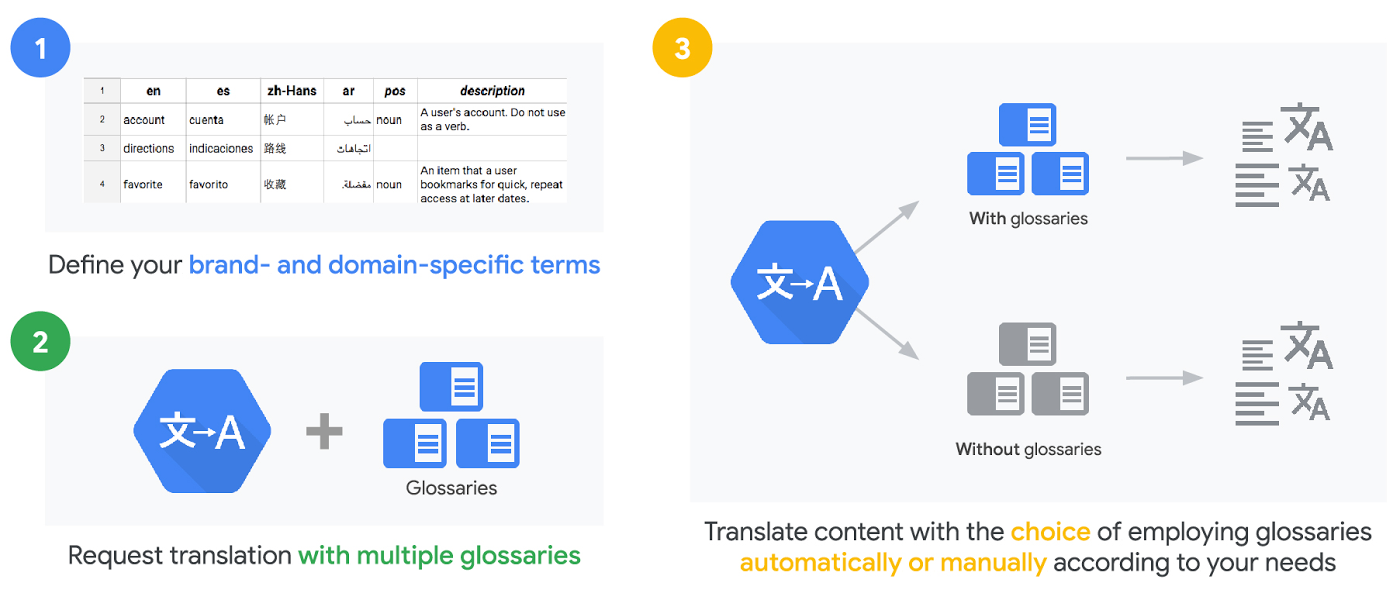
Translation Memory eXchange (TMX) is a standard XML format for providing source and target translation sentences. AutoML Translation supports input files in a format based on TMX version 1.4. This example illustrates the required structure:
AutoML Tables
AutoML Tables enables entire team of data scientists, analysts, and developers to automatically build and deploy state-of-the-art machine learning models on structured data at massively increased speed and scale. Transform your business by leveraging your enterprise data to tackle mission-critical tasks like supply chain management, fraud detection, lead conversion optimization, and increasing customer lifetime value.
AutoML Tables is a supervised learning service. This means that you train a machine learning model with example data. AutoML Tables uses tabular (structured) data to train a machine learning model to make predictions on new data. One column from the dataset, called the target, is what your model will learn to predict. Some number of the other data columns are inputs (called features) that the model will learn patterns from. You can use the same input features to build multiple kinds of models just by changing the target. From the email marketing example, this means you could build two models with the same input features: One model could predict a customer’s persona (a categorical target), and one could predict their monthly spending (a numerical target).
Google Auto-ML advantages
Google’s AutoML efforts aim to make ML more scalable and accelerate both research and industry applications. Initial efforts of neural architecture search have enabled breakthroughs in computer vision with NasNet, and evolutionary methods such as AmoebaNet and hardware-aware mobile vision architecture MNasNet further show the benefit of these learning-to-learn methods. 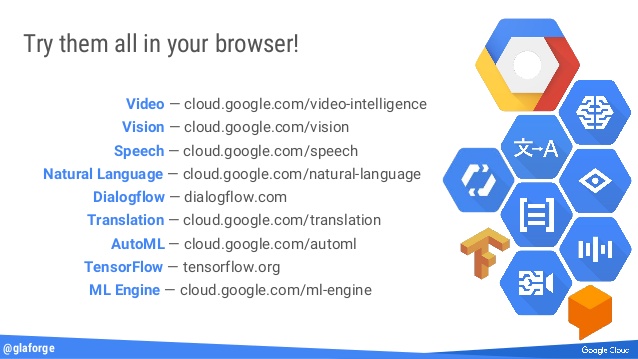
Recently a learning-based approach was applied to tabular data, creating a scalable end-to-end AutoML solution that meets three key criteria:
- Full automation: Data and computation resources are the only inputs, while a servable TensorFlow model is the output. The whole process requires no human intervention.
- Extensive coverage: The solution is applicable to the majority of arbitrary tasks in the tabular data domain.
- High quality: Models generated by AutoML has comparable quality to models manually crafted by top ML experts.
About Google
Google LLC is an American multinational technology company that specializes in Internet-related services and products, which include online advertising technologies, a search engine, cloud computing, software, and hardware.The company’s rapid growth since incorporation has triggered a chain of products, acquisitions, and partnerships beyond Google’s core search engine (Google Search). It offers services designed for work and productivity (Google Docs, Google Sheets, and Google Slides), email (Gmail), scheduling and time management (Google Calendar), cloud storage (Google Drive), instant messaging and video chat (Duo, Hangouts, Meet), language translation (Google Translate), mapping and navigation (Google Maps, Waze, Google Earth, Street View), video sharing (YouTube), note-taking (Google Keep), and photo organizing and editing (Google Photos).
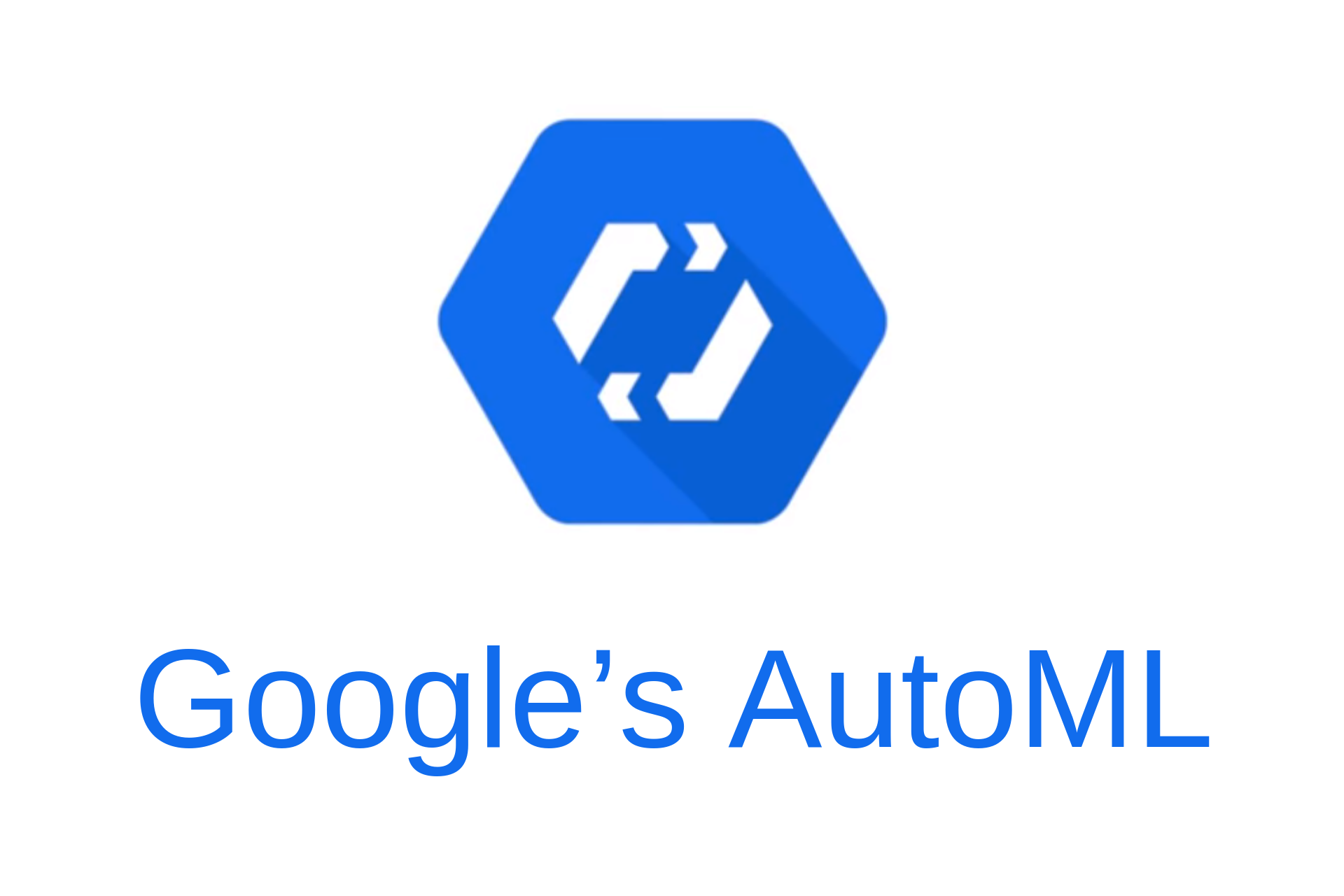
Leave a Reply